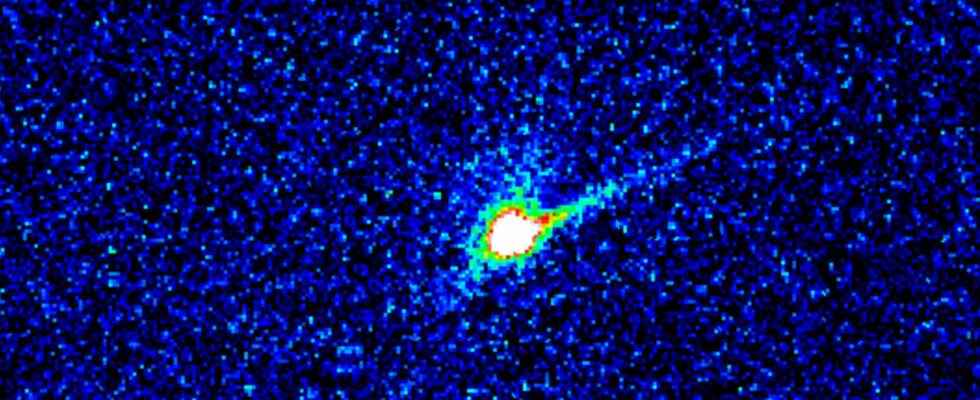Dimorphos, the asteroid hit by the DART mission, has changed. A few days after the impact, a gigantic tail of material formed behind the asteroid.
Never before had humanity voluntarily struck an asteroid with a probe. On the night of September 26-27, 2022, the DART mission succeeded, 11 million kilometers from our planet. The crash of the DART ship on the asteroid Dimorphos even spawned several stunning images.
The consequences of DART’s impact on Dimorphos are now being monitored by astronomers. The objective of this test is to deflect the asteroid, which evolves in orbit around another asteroid, Didymos. It will take time to know if DART has indeed disturbed the trajectory of Dimorphos. Nevertheless, astronomers have already been able to see a change, as spotted him Eric Lagadec, astrophysicist at the Côte d’Azur observatory. A week after the impact, scientists note persistent activity on the asteroid.
A huge dust trail emanates from the asteroid Dimorphos
Shortly after the crash, astronomers were surprised to discover that Dimorphos had a tail of matter, like comets. A day after the DART impact, Dimorphos appears to have become an active asteroid, with material ejection. We can see this structure in particular on an image obtained with the SOAR telescope in Chile, broadcast the 3rd of October. The dust trail emanating from Dimorphos is estimated to be over 10,000 km long. As a reminder, Dimorphos itself is only 170 m in diameter.
As NewScientist notes, the dusty tail seems to come from the dust cloud that could be observed around Dimorphos just after the DART impact. In the following days, this mass seems to have stretched to form a trail that follows the asteroid. The process must have the same origin as the cometary tails: proximity to the Sun contributes to the ejection of matter contained by the celestial object.
Observing such debris is a boon for astronomers, who can use it to learn more about the composition of Dimorphos. And, when the cloud has dissipated, we can then hope to see the surface of the asteroid, to draw other conclusions on the effects of DART.
